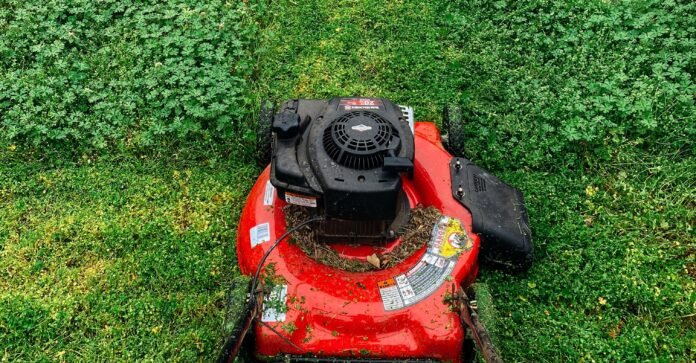In today’s digital age, technology is transforming nearly every aspect of our lives, including how we maintain our gardens. The advent of robot lawn mowers is a notable development in the landscaping industry, promising homeowners the freedom to enjoy a perfectly manicured lawn without lifting a finger. But have you ever wondered how these autonomous devices navigate your lawn to deliver the perfect cut every time? Let’s delve into the intricate world of automated gardening and explore how robot lawn mowers work.
What is a Robot Lawn Mower?
Before diving into the mechanics, let’s first understand what a robot lawn mower is. A robot lawn mower, also known as an autonomous mower, is a battery-powered device designed to mow lawns without human intervention. These machines use a combination of advanced sensors, programming, and GPS technology to navigate through your lawn, trimming the grass precisely and automatically.
Also read: The Advantages of Automation in Glass Manufacturing
Components of a Robot Lawn Mower
Robot lawn mowers are complex pieces of technology that contain several key components:
1. Sensors
Robot lawn mowers are equipped with different types of sensors, including collision sensors, lift sensors, rain sensors, and boundary sensors.
- Collision Sensors
These sensors detect if the mower has bumped into an object, such as a tree or garden furniture. Upon collision, the mower changes its direction to avoid the object.
- Lift Sensors
Lift sensors come into play when the mower is lifted off the ground. They immediately stop the cutting blades to prevent any potential injuries.
- Rain Sensors
Rain sensors can detect rainfall or high humidity. Most robot mowers are programmed to return to their docking station when it starts raining, as wet conditions can damage the mower and affect the quality of the cut.
- Boundary Sensors
These sensors detect the boundary wire that delineates the mowing area. The wire sends an electromagnetic signal that the mower picks up, helping it understand the boundaries of the lawn.
Also read: 14 Disadvantages of Robots in the Workplace
2. Navigation System
The robot mower uses a GPS navigation system or a physical boundary wire to navigate through your lawn. The boundary wire, placed around the edge of your lawn and any obstacles, creates an electromagnetic field that the robot lawn mower can detect and follow.
GPS-based mowers use satellite signals to map your lawn and its boundaries. Some advanced models may also use real-time kinematic (RTK) GPS for even greater precision, allowing them to navigate complex lawns and even handle different grass heights.
3. Cutting Mechanism
Most robot lawn mowers use a rotating disc with small razor-like blades to cut the grass. This mechanism results in a very fine grass clipping which is left on the lawn, acting as a natural fertilizer that contributes to a healthier and greener lawn.
How Does a Robot Lawn Mower Work?
Now that we understand the components let’s look at the functioning:
1. Starting Up
The mower starts its job based on the schedule programmed by the user. Some advanced models can also make decisions based on the grass growth rate.
2. Mowing the Lawn
The mower moves in a random pattern across your lawn. This not only ensures even cutting but also prevents the formation of mowing lines and patterns, which can happen with traditional mowers.
Also read: Robot End Effector : Understanding the Types and Applications
3. Avoiding Obstacles and Boundaries
If the mower hits an obstacle, the collision sensors activate, and the mower changes its direction. Similarly, when the mower reaches the boundary wire, the boundary sensor triggers the mower to turn around.
4. Returning to the Dock
When the job is done, or if the battery is low, the mower automatically returns to its charging dock.
The Programming Behind Robot Lawn Mowers
Behind the scenes, robot lawn mowers are governed by sophisticated programming. Their random mowing patterns are directed by algorithms which ensure that the mower covers the whole lawn over time, even though the path it takes might seem chaotic. If you could speed up time, you would see the mower eventually covering every inch of your lawn.
Some robot mowers are smart enough to even adapt to your lawn’s growth rate and weather conditions. They have growth sensors that detect how fast your grass is growing and can adjust their mowing schedule accordingly. They can also access weather data and pause their operations in case of adverse weather.
Also read: Miso Robotics Investment Review: Analyzing the Future of AI-Powered Robotics
Advanced Features in Modern Robot Lawn Mowers
As technology evolves, robot lawn mowers are being integrated with even more advanced features:
1. Smartphone Integration
Modern robot lawn mowers can be controlled via smartphone apps, which offer features such as remote control, scheduling, tracking, and even theft alerts.
2. Zoning Capabilities
Some robot mowers can divide your yard into different zones and mow each one at a different height, which can be especially useful if you have various types of grass or terrain in your yard.
3. Quiet Operation
One of the key advantages of robot lawn mowers is their quiet operation. They are significantly quieter than traditional mowers, causing less noise pollution.
4. Eco-Friendly
Being electric, robot lawn mowers produce zero emissions during operation, making them a more eco-friendly option than gas-powered mowers.
Also read: Digital Disruption: The Changing Face of Gaming through Technology
The Future of Robot Lawn Mowers
Robot lawn mowers are already quite advanced, but they continue to evolve. In the future, we may see mowers with more advanced AI capabilities that can learn and adapt to their environment in real-time, eliminating the need for boundary wires or physical markers.
Furthermore, as technology progresses, it is likely that we will see even greater integration between robot mowers and other smart home devices. Imagine a mower that can communicate with your sprinkler system, delaying its mowing if the sprinklers are going to be on or have just finished watering the lawn.
In conclusion, the robot lawn mower is a game-changer in the world of landscaping. Through the marriage of advanced robotics and lawn care, we can look forward to a future where perfect lawns are achievable with minimal effort. The automated gardening revolution has only just begun, and the robot lawn mower is leading the charge.
Conclusion
Robot lawn mowers represent the future of lawn maintenance, combining advanced technology with practical utility to take the strain out of maintaining a beautifully manicured lawn. As these devices continue to evolve and become even more sophisticated, homeowners can look forward to enjoying perfectly kept lawns with minimal effort. As we’ve explored, the inner workings of these autonomous devices involve intricate sensor technology, navigation systems, cutting mechanisms, and complex programming. With the added advantages of eco-friendliness and quiet operation, it’s clear to see why robot lawn mowers are rapidly becoming a popular choice for many homeowners. Whether you have a small lawn or a sprawling estate, there’s likely a robot lawn mower model out there to suit your needs. It’s time to embrace this innovative solution for automated gardening, and look forward to greener and healthier lawns in our future.
Frequently Asked Questions (FAQs) about robot lawn mowers
1. Q: How safe is a robot lawn mower around children and pets?
A: Safety is a top priority in the design of robot lawn mowers. Most models are equipped with sensors that stop the blades immediately if the mower is lifted or tilted. Additionally, the blades are typically located well within the body of the mower to protect against accidental contact. However, as with any machinery, it’s recommended to supervise children and pets around a working mower.
2. Q: Does a robot lawn mower work on slopes?
A: Yes, most robot lawn mowers are designed to handle slopes. The capability varies by model and manufacturer, but many can handle slopes up to 20 degrees, and some advanced models can handle slopes up to 30 degrees.
3. Q: How does a robot lawn mower know where to cut?
A: Robot lawn mowers use boundary wires or GPS navigation to determine the area to be mowed. The boundary wire sends a signal that the mower follows, while GPS-based mowers use satellite signals to map your lawn and its boundaries.
4. Q: Can a robot lawn mower handle uneven ground or obstacles?
A: Robot lawn mowers are designed to handle common lawn obstacles like trees, garden furniture, and uneven ground. They have sensors that allow them to detect and navigate around obstacles. However, for extreme unevenness, such as deep holes or very bumpy terrain, it might be necessary to level the ground for optimal performance.
5. Q: Can a robot lawn mower cut wet grass?
A: While some robot lawn mowers can technically cut wet grass, it is usually not recommended. Cutting wet grass can lead to an uneven cut and may clump, which could potentially clog the mower. Most robot lawn mowers are equipped with rain sensors and will return to their charging station when it starts raining.

